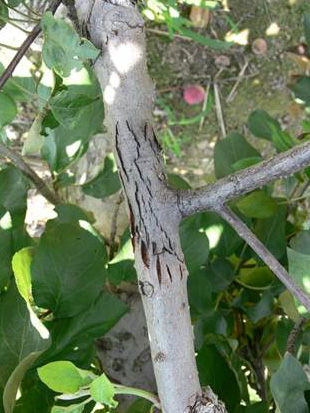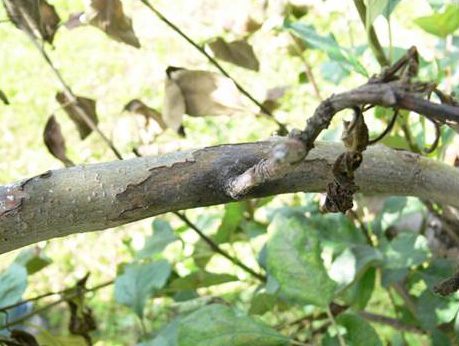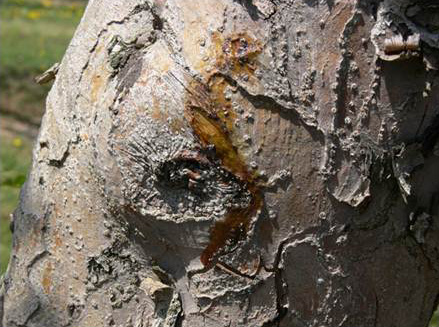Fire blight canker removal in early spring
Learn why it is important to remove fire blight cankers in early spring in pear and apple orchards.
Apple and pear growers who had fire blight last year should scout their orchards for cankers and remove them in late winter or early spring. In fact late winter and early spring is the perfect time of year to remove fire blight cankers from the orchard before temperatures warm up and the cankers begin to ooze bacteria. These over wintering cankers will be the source of the disease this coming year. Removing them now will eliminate or reduce the inoculum source from the orchard.
There are many reasons for canker removal at this time of year. First of all, the bacteria pathogen Erwinia amylovora is dormant in the canker during winter and early spring and therefore it will not be spread on pruning shears or tools. There will be no need to disinfect tools between cuts. Secondly, the cankers are easier to see in the orchard without foliage interfering with scouting for them.
Fire blight cankers can develop on twigs, limbs or trunks of trees and can be various sizes. Often the cankers are located where an infected spur, twig or branch was attached the previous season (Figure 1). They often appear slightly sunken with a narrow ridge along the canker margin and do not penetrate deep into the wood. Some cankers may develop cracks within or around the margins (Figure 1) or they may appear smooth (Figure 2). Smooth margined cankers are more difficult to find and are most likely to become active when the weather warms up in the spring. The inner bark of the canker may appear reddish brown and may ooze billions of bacteria cells in a sticky sugary substance during the spring or early summer particularly during wet warm weather (Figure 3). Black sooty mould sometimes grows on the sugary substances which give the canker a dark or black appearance. Often, fire blight cankers become colonized by other fungi such as the black rot fungus Botryosphaeria obtusa.
Locating all fire blight cankers in an orchard is often difficult in one operation and it is recommended to scout the orchards more than once during the early spring and at different times during the day. They are observed more easily during bright sunny days. It is also a good idea to scout for fire blight cankers later in the spring when temperatures warm up, at bud opening or green tip, to locate cankers that were missed earlier. Pruning tools will need to be sterilized between cuts at this stage to prevent the spread of the pathogen because the pathogen may be active at this time. Pruning cuts should be made at least 30 cm (12 inches) beyond the canker or visible infected tissue into 2nd year wood. Trees that appear to be infected perennially or for more than one year indicate that an active canker has been missed or been misdiagnosed and should be removed altogether.


